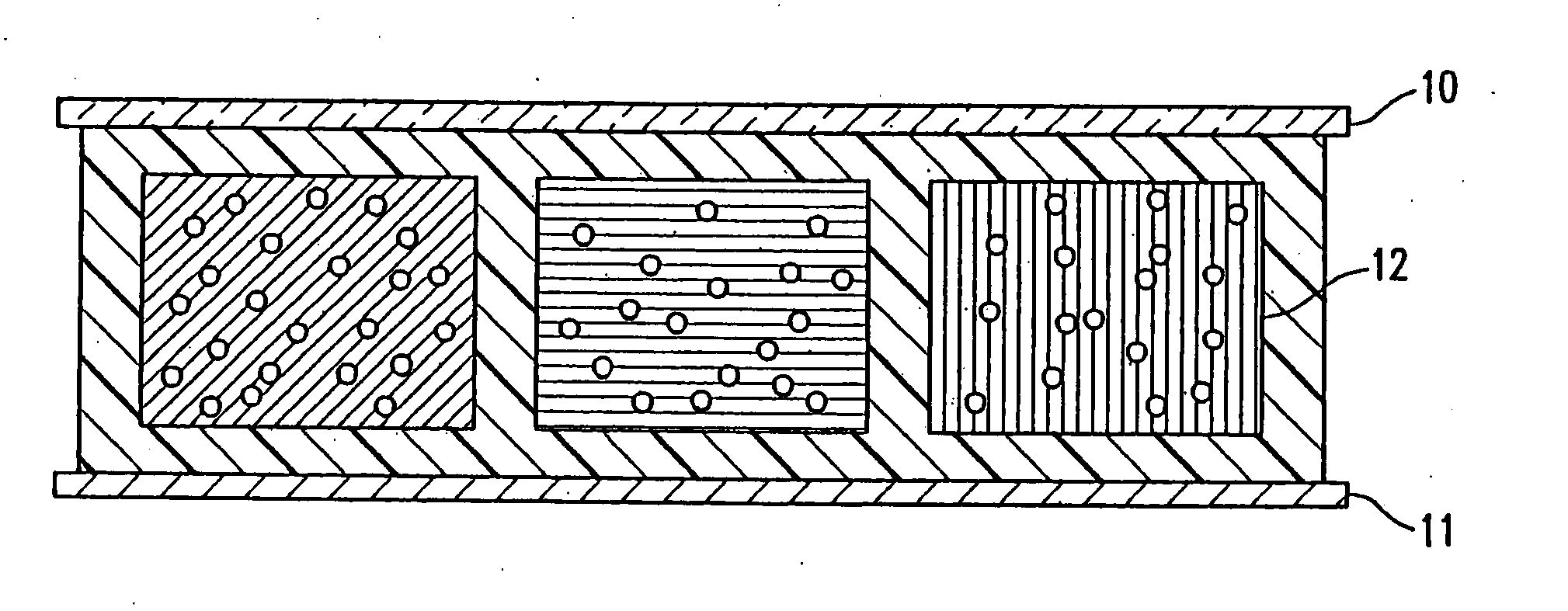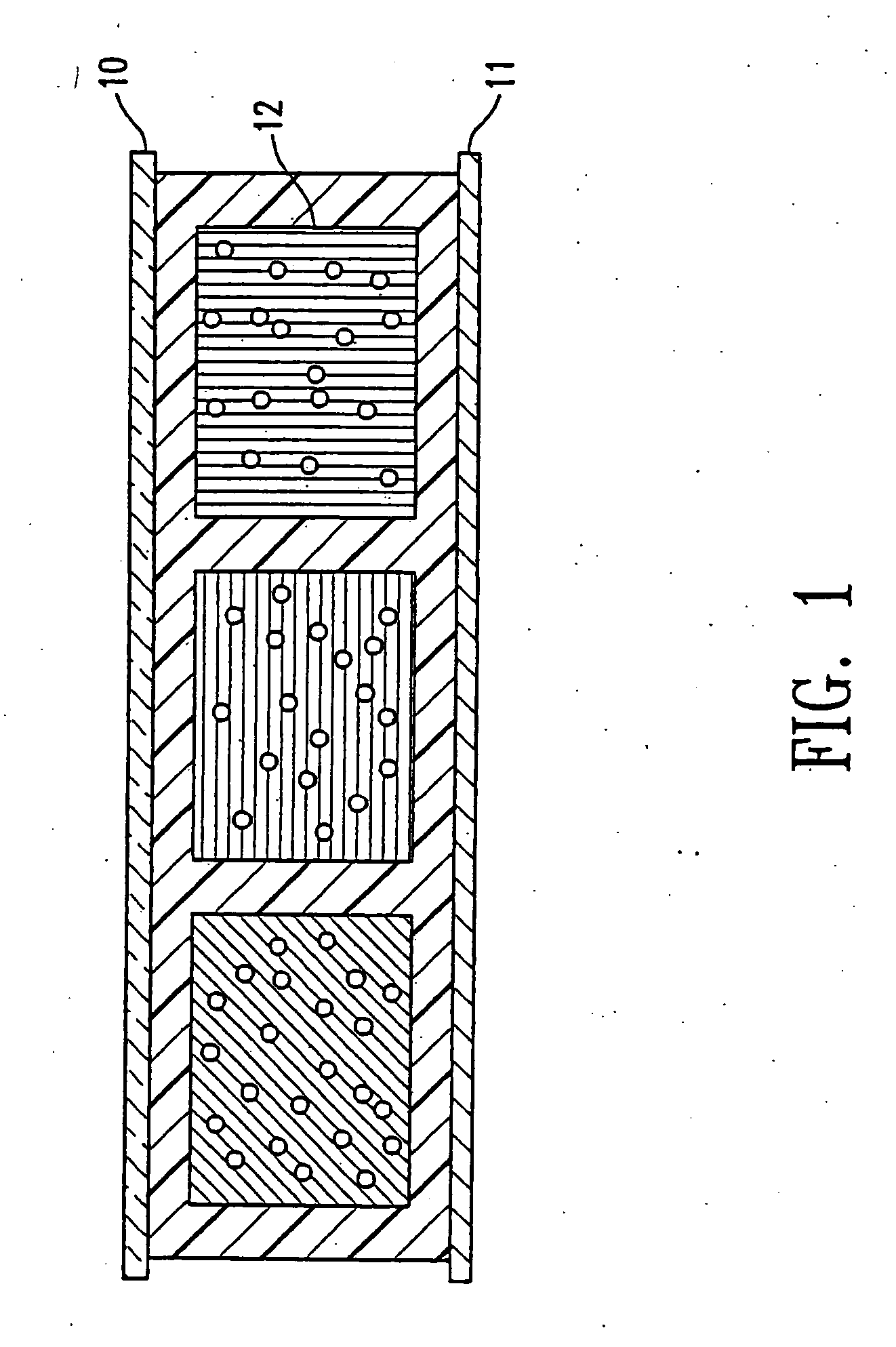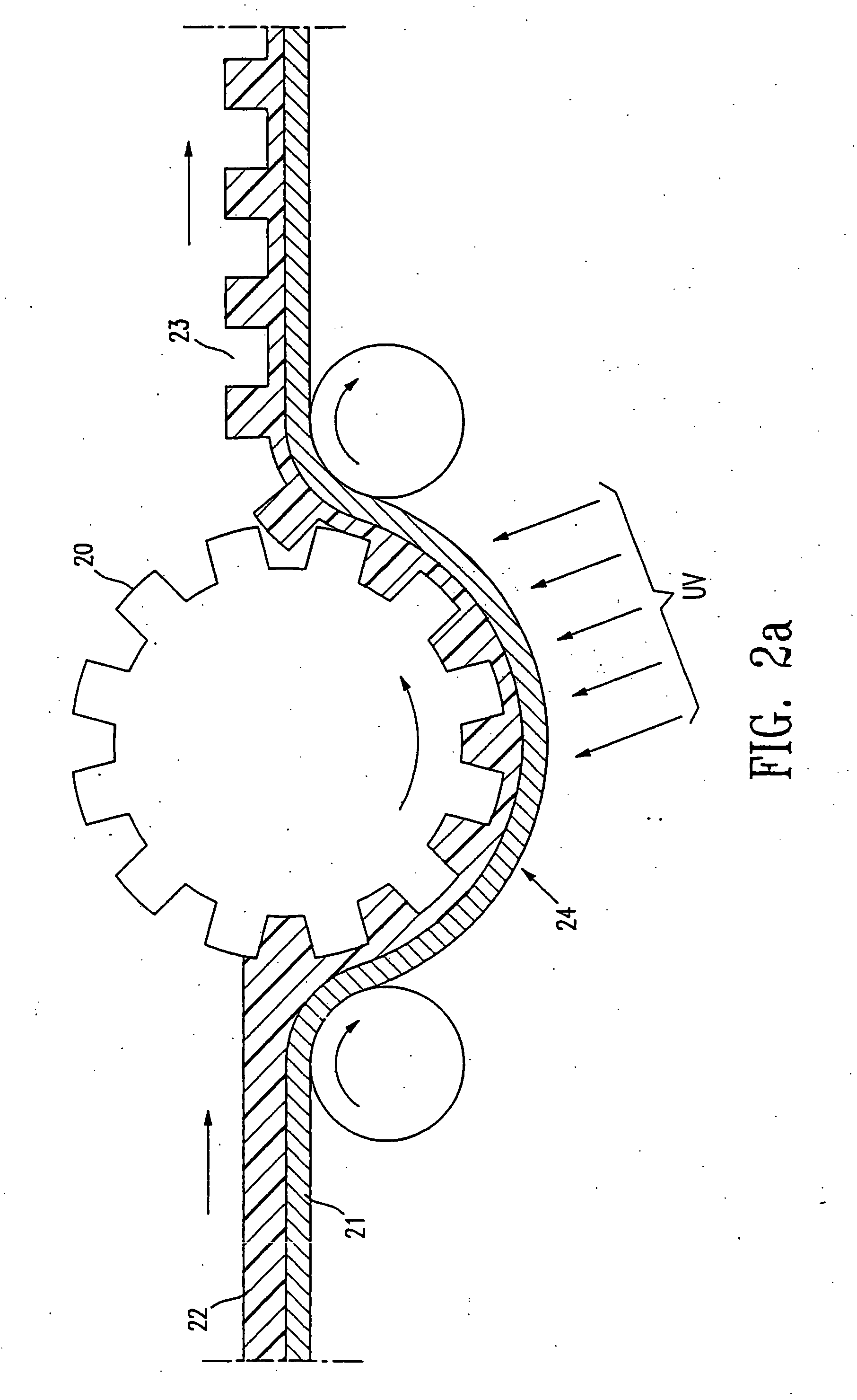Electrophoretic display and process for its manufacture
- Summary
- Abstract
- Description
- Claims
- Application Information
AI Technical Summary
Benefits of technology
Problems solved by technology
Method used
Image
Examples
example 1
Preparation of Microcups by Microembossing
[0097] The composition shown in Table 1 was coated onto Mylar™ J101 / 200 gauge using a Nickel Chrome bird type film applicator with an opening of 3 mil. The solvent was allowed to evaporate leaving behind a tacky film with a Tg below room temperature.
TABLE 1PMMA-containing composition for microembossingNo.DescriptionIngredientSupplierWt %1Epoxy acrylateEbecryl ™ 3605UCB7.35Chemicals2MonomerSartomer ™Sartomer9.59SR2053Urethane acrylateEbecryl ™ 6700UCB4.87Chemicals4PolymethylmethacrylateElvacite ™ 2051ICI9.115PhotoinitiatorDarocur ™ 1173Ciba1.456Cationic photoinitiatorCyracure ™ UVIUnion0.606976Carbide7SolventAcetoneAldrich67.03Total100.00
[0098] A pre-patterned stencil from Photo Stencil, Colorado Springs, Colo., was used as the male mold for microembossing and Frekote™ 700-NC from Henkel was used as the mold release. The coated film was then embossed by the stencil using a pressure roller at room temperature. The coating was then UV cured ...
example 2
Preparation of Microcups
[0099] A composition containing solid oligomer, monomer and additive is shown in Table 2. The glass transition temperature of the mixture was again below room temperature. The tacky coating was deposited on top of Mylar™ J101 / 200 gauge as before. Embossing was conducted at 60° C. using a heated pressure roller or laminator. Well-defined high resolution microcups (100-400 dpi) with depth ranging from 5-30 microns were produced.
TABLE 2Embossing composition containing oligomer,monomer, additive and solventNo.DescriptionIngredientSupplierWt %1Epoxy acrylateEbecry ™ I 3903UCB Chemicals17.212MonomerHDODAUCB Chemicals8.613Urethane acrylateEbecryl ™ 4827UCB Chemicals2.874PhotoinitiatorIrgacure ™ 500Ciba1.435SlipEbecryl ™ 1360UCB Chemicals1.606SolventAcetoneAldrich68.26Total100
example 3
Preparation of Pigment Dispersion in Dielectric Solvent
[0100] Polystyrene (0.89 grams, Polysciences, Inc., mw. 50,000) and AOT (0.094 grams, American Cyanamide, sodium dioctylsulfosuccinate) were dissolved in 17.77 grams of hot xylene (Aldrich). Ti-Pure R-706™ (6.25 grams) was added to the solution and ground in an attritor at 200 rpm for more than 12 hours. A low viscosity, stable dispersion was obtained. Oil-blue N (0.25 grams, Aldrich) was added to color the dispersion. The suspension was then tested in a standard electrophoretic cell comprising two ITO conductor plates separated by a 24 microns spacer. High contrast, alternating white and blue images were observed with a switching rate of about 60 Hz and a rising time of 8.5 msec at 80 volts.
PUM
| Property | Measurement | Unit |
|---|---|---|
| Fraction | aaaaa | aaaaa |
| Fraction | aaaaa | aaaaa |
| Fraction | aaaaa | aaaaa |
Abstract
Description
Claims
Application Information
 Login to View More
Login to View More - R&D
- Intellectual Property
- Life Sciences
- Materials
- Tech Scout
- Unparalleled Data Quality
- Higher Quality Content
- 60% Fewer Hallucinations
Browse by: Latest US Patents, China's latest patents, Technical Efficacy Thesaurus, Application Domain, Technology Topic, Popular Technical Reports.
© 2025 PatSnap. All rights reserved.Legal|Privacy policy|Modern Slavery Act Transparency Statement|Sitemap|About US| Contact US: help@patsnap.com



